Most 1980 half-dollar coins are worth face value ($0.50), but uncirculated, proof, or error coins can be significantly more valuable. Philadelphia (P) and Denver (D) circulation coins typically remain at 50 cents, while San Francisco (S) proof coins with strong cameo contrast can fetch several dollars. Error coins like Doubled Die Obverse/Reverse or “Struck Through” errors are highly sought by collectors and command premium prices. Value depends primarily on condition grade, mint mark, and error type. To determine worth, examine the coin’s grade, check for visible errors like doubling or unusual marks, and consult professional appraisers or online resources like eBay for comparable sales data.
Most people dismiss 1980 Kennedy half dollars as ordinary pocket change worth exactly 50 cents. While that’s true for the majority, certain mint marks, exceptional grades, and specific errors can transform these coins into collectibles worth several times their face value. Understanding what separates a common circulation piece from a valuable specimen requires knowledge of mint marks, grading standards, and the specific errors that make collectors take notice.
Understanding 1980 Half Dollar Mint Marks and Their Significance
The United States Mint produced Kennedy half dollars at three facilities in 1980, each leaving a distinctive mint mark on the coins. Philadelphia coins bear either a “P” mint mark or no mark at all, Denver coins display a “D,” and San Francisco exclusively struck proof coins marked with an “S.” These small letters appear on the obverse side, just above the date, but their presence means more than simple geography.
Philadelphia struck approximately 44,134,000 half dollars in 1980, while Denver produced around 33,456,000 pieces. These circulation strikes served everyday commerce, passing through countless hands and cash registers. San Francisco, however, focused solely on proof production, creating 3,554,806 specially struck coins for collectors. The mint process for San Francisco proofs involved multiple strikes on specially prepared planchets using polished dies, resulting in mirror-like fields and frosted design elements.
Standard circulation coins from Philadelphia and Denver in typical circulated condition remain worth their face value of 50 cents. The massive production numbers and copper-nickel clad composition contain no precious metal premium, unlike their 90 percent silver predecessors from 1964 and earlier. However, condition dramatically changes this equation for uncirculated examples.
Grading Standards That Determine Market Value
Professional coin grading operates on the Sheldon Scale, ranging from Poor (P-1) to Perfect Mint State (MS-70). For 1980 half dollars, the crucial threshold begins at Mint State 63 (MS-63), where coins show full mint luster with only minor contact marks. At this level, Philadelphia and Denver specimens typically trade between two to five dollars depending on market demand.
Moving up the scale, MS-65 examples exhibit exceptional eye appeal with sharp strikes and minimal bagmarks. A 1980-P or 1980-D half dollar graded MS-65 commands approximately eight to twelve dollars from specialized dealers. The population at this grade remains limited because most circulation strikes encountered handling during production, shipping, and distribution.
Premium specimens graded MS-67 or higher enter rarified territory. A 1980-D Kennedy half dollar certified MS-67 by Professional Coin Grading Service (PCGS) or Numismatic Guaranty Corporation (NGC) sold for 45 dollars at Heritage Auctions in 2022. At MS-68, fewer than twenty examples exist across both Philadelphia and Denver mints combined, with auction records reaching 125 to 175 dollars for these condition rarities.
The following table illustrates typical market values for 1980 circulation strikes:
| Grade | Philadelphia (P) | Denver (D) |
|---|---|---|
| MS-63 | 2.50 dollars | 3.00 dollars |
| MS-64 | 5.00 dollars | 6.00 dollars |
| MS-65 | 10.00 dollars | 12.00 dollars |
| MS-66 | 25.00 dollars | 30.00 dollars |
| MS-67 | 45.00 dollars | 50.00 dollars |
San Francisco Proof Coins and Their Premium Values
San Francisco proofs represent an entirely different category from circulation strikes. These coins feature deeply mirrored surfaces on the fields with frosted design elements on Kennedy’s portrait, the eagle, and lettering. The contrasting surfaces create what collectors call “cameo” effect, with deeper versions classified as “Deep Cameo” (DCAM) by grading services.
Standard 1980-S proofs without cameo designation in Proof-65 (PR-65) grade trade around three to five dollars. These coins show the characteristic proof finish but lack the dramatic contrast between fields and devices. As proof production improved throughout the late 1970s and early 1980s, more coins achieved cameo status, making non-cameo examples somewhat less desirable to specialists.
Cameo proofs (PR-65 CAM) command eight to twelve dollars, while Deep Cameo specimens (PR-65 DCAM) reach fifteen to twenty-five dollars. At PR-68 DCAM, the population drops significantly, with examples selling between forty and seventy dollars. The absolute finest known, graded PR-70 DCAM, achieved 450 dollars at a Stack’s Bowers auction in 2023, though only six examples have received this perfect grade from major services.
Doubled Die Errors That Command Collector Attention
The 1980 Kennedy half dollar series includes several notable doubled die varieties, though none reach the legendary status of errors found on earlier denominations. A doubled die occurs when the working die receives multiple impressions from the hub die during production, with slight misalignment between impressions creating visible doubling on the finished coin.
The most significant 1980 variety shows pronounced doubling on the obverse, particularly visible on “LIBERTY” and “IN GOD WE TRUST.” Under magnification, letters appear to have a shadow or echo effect, with the doubling strongest on the letters “LIBE” and “RUST.” This 1980-P Doubled Die Obverse exists in limited quantities, with approximately 100 to 150 examples confirmed across all grades.
In lower circulated grades like Fine-12 (F-12) or Very Fine-20 (VF-20), this error variety sells for 85 to 125 dollars. Uncirculated examples graded MS-63 command 250 to 350 dollars, while MS-65 specimens reach 600 to 850 dollars based on recent eBay completed sales and dealer listings. A single MS-66 example certified by PCGS traded hands for 1,200 dollars in 2023.
A less dramatic 1980-D Doubled Die Reverse exists, showing minor doubling on the eagle’s tail feathers and the letter “S” in “STATES.” This variety attracts less premium, with uncirculated examples adding 30 to 75 dollars above typical MS-63 values. Collectors seeking doubled die varieties should use magnification of at least 10x power to confirm the doubling, as die deterioration and machine doubling can create superficially similar appearances without the same value.
Additional Error Types Worth Investigating
Beyond doubled dies, several other minting errors appear on 1980 half dollars with varying degrees of rarity and value. Off-center strikes occur when the planchet sits improperly in the collar die during striking, resulting in partial design impression. A 1980-P half dollar struck 10 percent off-center with full date visible typically sells for 45 to 75 dollars, while a more dramatic 30 percent off-center example commands 125 to 200 dollars.
Struck-through errors happen when foreign material sits between the die and planchet during striking. Common struck-through items include grease, cloth fragments, or wire pieces, creating blank areas or unusual textures on the finished coin. A 1980-D Kennedy with a struck-through cloth error sold for 65 dollars on eBay in November 2023. The value depends heavily on the size and visibility of the affected area.
Lamination errors result from impurities in the metal alloy or improper bonding of the copper-nickel clad layers. These appear as peeling or flaking on the coin’s surface. Small lamination errors add minimal premium, perhaps five to fifteen dollars for a noticeable example, while dramatic laminations affecting large portions of the design can reach 40 to 80 dollars.
Die cracks and cuds represent another error category worth examination. A die crack appears as a raised line on the finished coin, occurring when the die itself fractures during production. Minor die cracks add little value, but a major cud where a piece of the die breaks away, creating a blank raised area, commands 35 to 100 dollars depending on size and location.
Professional Authentication and Grading Services
Determining whether your 1980 half dollar justifies professional grading requires honest assessment of its condition and error status. For standard circulation strikes, grading costs typically range from 20 to 40 dollars per coin, making it economically sensible only for apparent MS-66 or higher specimens. The coin’s raw value must exceed the combined grading fee plus shipping costs to justify certification.
Error coins present different calculations. A suspected doubled die obverse warrants professional authentication even in lower grades, as the error premium exceeds typical grading costs. Both PCGS and NGC maintain online databases showing population reports, auction records, and detailed variety attributions. Submitting through authorized dealers often reduces costs through bulk submission discounts.
Before sending any coin for grading, photograph both sides under magnification and compare your images against confirmed examples in grading service databases. This preliminary research prevents costly submission of common die deterioration mistaken for valuable doubling, or normal strike weakness misidentified as an error.
Maximizing Value Through Smart Selling Strategies
Once you’ve identified a 1980 half dollar with above-average value, several selling channels offer different advantages. For coins worth twenty to one hundred dollars, eBay provides broad collector exposure with competitive bidding, though seller fees typically consume 13 to 15 percent of the final price including payment processing. Detailed photographs showing the specific features that create value, along with accurate descriptions, generate stronger bidding.
Local coin shops offer immediate payment but typically pay wholesale prices ranging from 60 to 75 percent of retail value. This option works best when you need quick liquidity or lack experience photographing and shipping coins safely. Establish value beforehand using recent eBay sold listings or price guides to ensure fair offers.
For exceptional specimens graded MS-67 or higher, or significant error varieties worth several hundred dollars, consignment through major auction houses like Heritage, Stack’s Bowers, or Great Collections reaches serious collectors willing to pay premium prices. These services charge seller fees between 10 and 20 percent but provide professional photography, detailed catalog descriptions, and access to buyers specifically seeking high-grade modern coins.
Building Your 1980 Kennedy Half Dollar Collection
Whether you discovered a valuable error in pocket change or you’re actively building a specialized collection, the 1980 Kennedy half dollar offers accessible entry into numismatics. Start by acquiring one example from each mint facility in the highest affordable grade. A basic three-coin set with MS-64 Philadelphia and Denver pieces plus a PR-65 DCAM San Francisco proof costs approximately 25 to 35 dollars total.
Advanced collectors pursue registry sets through PCGS or NGC, competing for the finest-known examples of each variety and grade. This competitive collecting drives premium prices for top-population coins, creating strong markets for sellers with exceptional specimens. Even without registry participation, assembling a complete error variety collection provides engaging challenge, requiring patience to locate authenticated examples of each doubled die and significant error type.
Check your change regularly and examine any 1980 half dollars under magnification before spending them. While finding a significant error in circulation remains unlikely after four decades, coin roll hunting and bank box searches occasionally yield unexpected treasures that earlier collectors overlooked.
You may be interested:
- 1859 Indian Head Penny Coin Value Complete Errors List And No Mint Mark Worth Guide For Collectors
- 1911 V Nickel Coin Value Guide Complete Errors List And No Mint Mark Worth Today
- 1902 Dime Coin Value Complete Errors List With O S And No Mint Mark Worth Guide
- 1788 Quarter Coin Value Complete Guide Errors List And D S P Mint Mark Worth Revealed
- 1776 To 1976 Bicentennial Half Dollar Coin Value Complete Errors List And What Your D S And No Mint Mark Coins Are Actually Worth
- 1990 Penny Coin Value Errors List How D S And No Mint Mark Pennies Are Worth Thousands Of Dollars

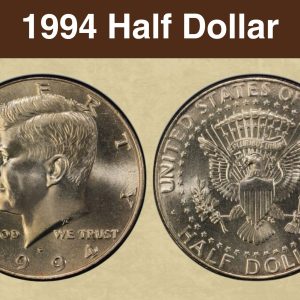
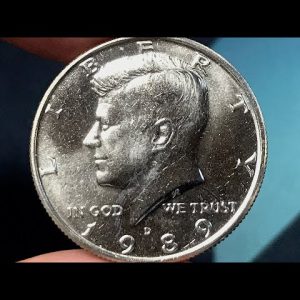
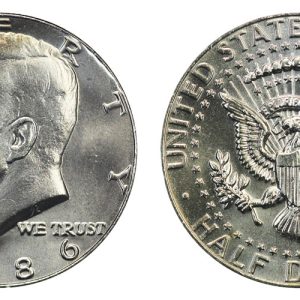
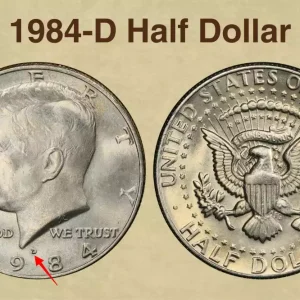
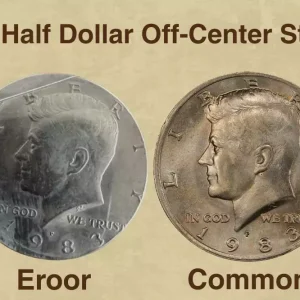
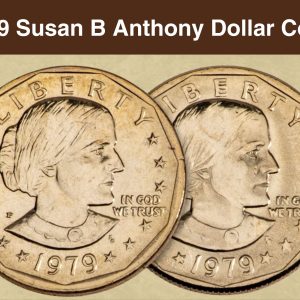
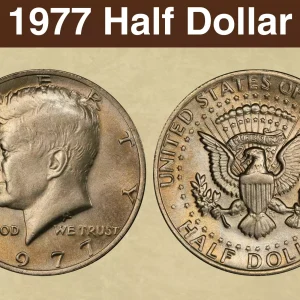
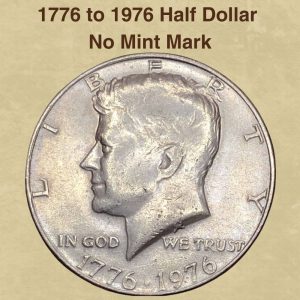
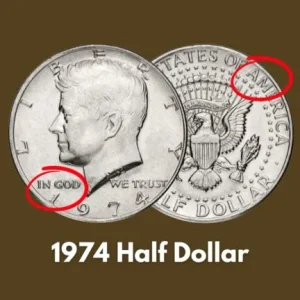
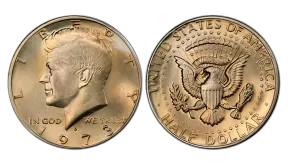
What are the errors on the 1980 half dollar?
Common 1980 half dollar errors include double die errors (both obverse and reverse), collar clash errors, struck-through errors, and filled-in mint marks. More significant errors like off-center strikes where the design is incomplete, and coins struck on the wrong planchet, are also known and can be more valuable.
What 1980 half dollars are worth money?
The coins were made of a copper core clad with nickel durable silvery in appearance. But with no intrinsic silver value chapter 6 collectors and the 1980 half-doll.
What errors to look for on Kennedy half dollars?
Look for common Kennedy half dollar errors such as doubled dies, off-center strikes, die breaks, and filled or missing mint marks. Specific rare errors include the 1964 “Accented Hair” variety, the 1971-D and 1977-D struck on 40% silver planchets, and 1968-S proof coins with an inverted mint mark. For recent coins, look for 2024 errors like the dropped star or die clashes.
How to tell if a 1980 dollar coin is rare?
A 1980 dollar coin, specifically a Susan B. Anthony dollar, is made rare by exceptional condition (high mint state grade), specific minting errors, or being a proof strike with a reflective mirror-like finish. Common 1980 dollars are worth their face value, but a rare 1980 Susan B. Anthony dollar could be a coin in extremely high grade, have a striking error like a 45% off-center strike, or be a highly reflective proof coin.